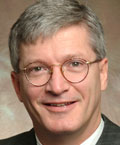Nature Medicine has a nice feature from Jeanne Erdmann highlighting the debate over how long donated blood can be stored. It sets the stage for two prospective clinical trials (RECESS and ABLE), which recently concluded but are still being analyzed. The trials were looking at how the age of stored blood affects patients undergoing cardiac surgery or in intensive care, respectively. Erdmann also mentions that the NIH’s Clinical Center already has tightened its standards for blood storage time.
Emory Blood Bank director John Roback and cardiologist Arshed Quyyumi have been participants in this debate, both theoretically and experimentally. In 2011, they proposed that depletion of the messenger molecule nitric oxide limits the benefits donated blood can provide to patients. In addition to nitric oxide depletion, the “storage lesion†is likely to include several changes, such as lysis of red blood cells, mechanical alterations in the remaining cells, and other chemical changes.
Since then, Emory research has shown that transfusion of donated blood more than three weeks old results in impaired blood vessel function in hospitalized patients, but in contrast, not in healthy volunteers. This information could allow doctors to prioritize fresher blood for patients with cardiovascular diseases.






